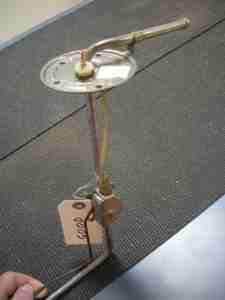On most all early GM trucks their fuel line exited on the bottom of the tank. It was usually attached to a brass shut-off valve which threaded into the tank. In case of fuel pump or line repair, a person had to lay under the truck to turn the tank valve and stop fuel flow.
No doubt, this design resulted in many building fires as the trucks aged. By design, the tank is above the fuel pump. Thus, an un-noticed fuel drip or worse will continue until the tank is drained by gravity. What a dangerous mix in the many homes at that time with basement garages and nearby gas fired water heaters or furnaces.
In 1954 the needed change occurred. The gas pick-up line now leaves the tank on the top but extends down to almost the bottom. In this way, the gasoline does not drain due to a line leak and sediment stays in the tank bottom.
For the perfectionist wanting his truck authentic, the original system does not have to be a fire hazard. Regularly check the short neoprene flex line between the tank and fuel pump. There is a limit on how long the non-metal flex fuel line can last.
For the non-perfectionist: Use a 1954 gas sending unit in the 1949-53 behind the seat gas tank. With a few line alterations fuel can no longer drip from a neoprene hose between the tank and the fuel pump. That is "peace of mind".

1954 and newer (above)

1953 and older (above)


